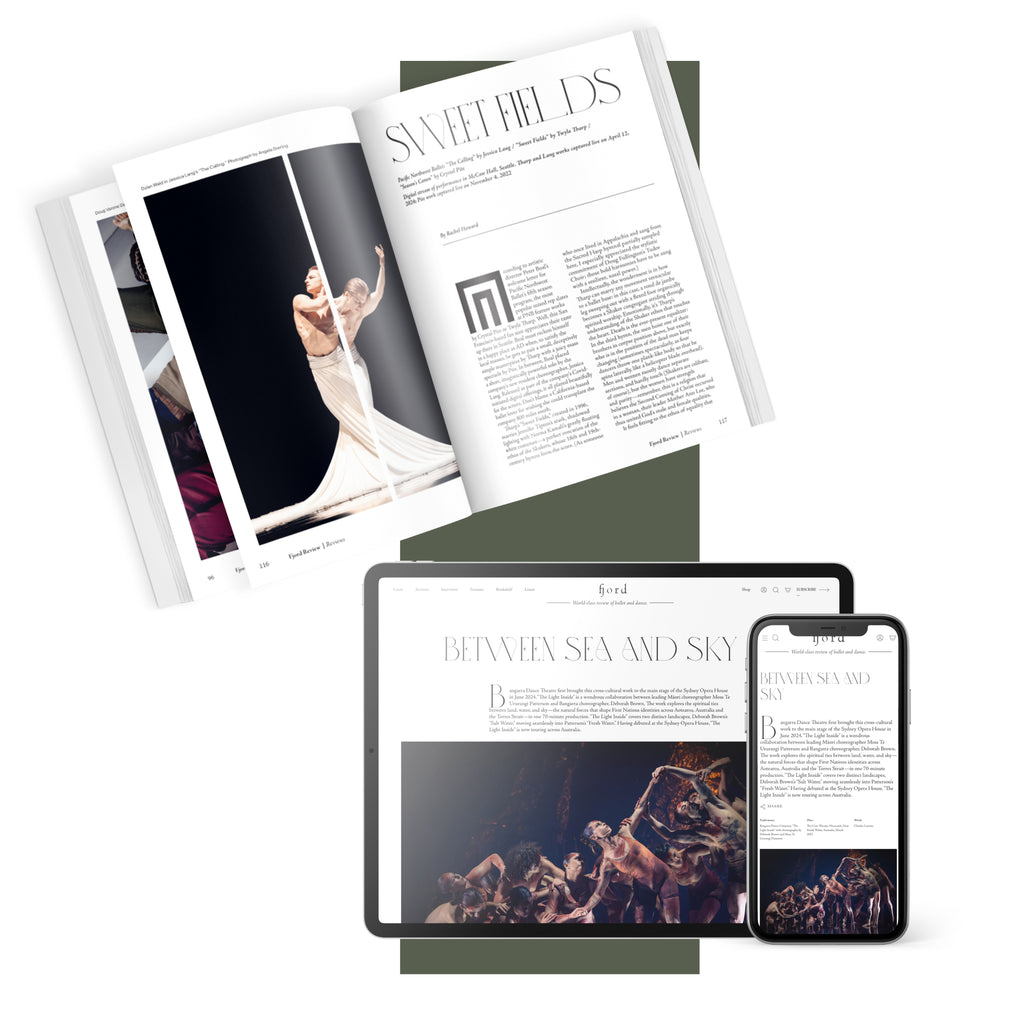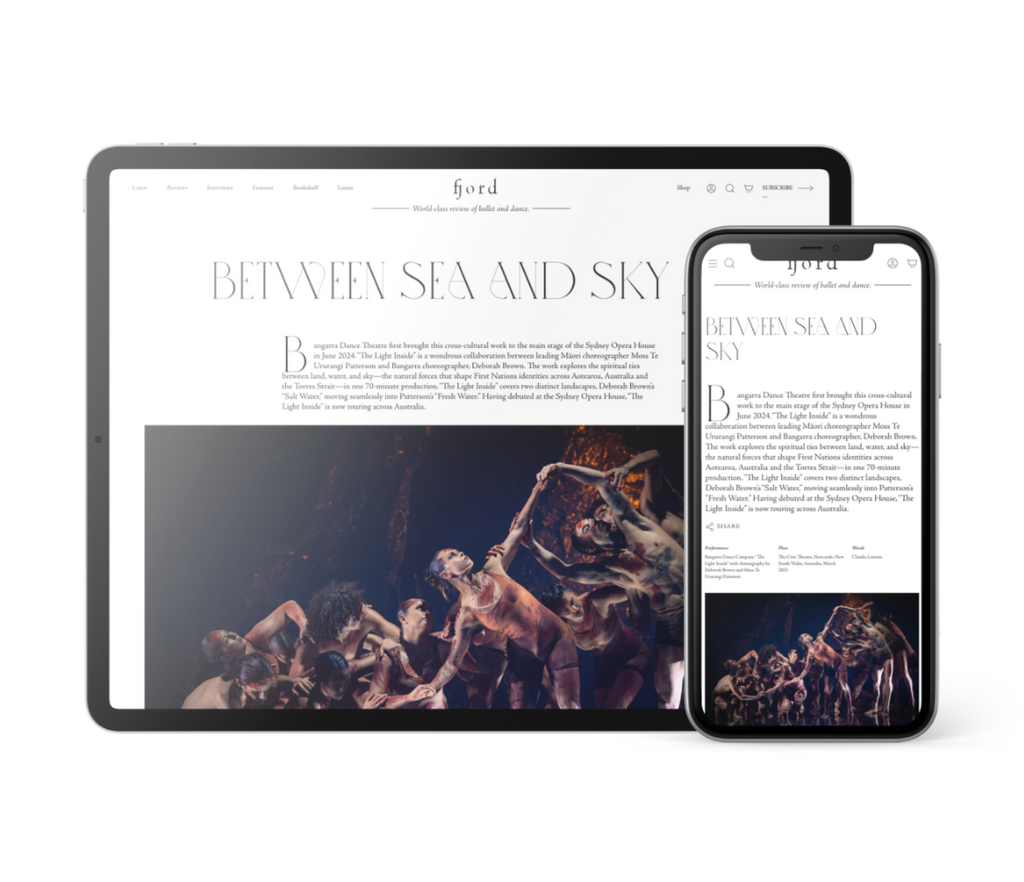Ryan Tomash Steps into a New Role
Back in October, New York City Ballet got a new cowboy. His arrival occurred in the final section of George Balanchine’s “Western Symphony.”
Continue Reading
World-class review of ballet and dance.
“Tanz” opens on a ballet class like none I’ve ever attended. Onstage are two portable barres and four dancers in rehearsal clothes stretching and warming up. Eighty-three-year-old ballerina Beatrice Cordua teaches from a wheelchair, naked. “The toes are the tongue of the foot,” she declares as the dancers tendu at the barre. “You should take your clothes off,” she suggests. “Muscle is beauty. Muscle is movement.” Soon the stage is filled with curvy, tattooed female flesh. A series of grand tendus reveals glimpses of vulva that challenge my sense of modesty. A familiar floor stretch leaves nothing to the imagination.
Performance
Place
Words



“Uncommonly intelligent, substantial coverage.”
Your weekly source for world-class dance reviews, interviews, articles, and more.
Already a paid subscriber? Login

Back in October, New York City Ballet got a new cowboy. His arrival occurred in the final section of George Balanchine’s “Western Symphony.”
Continue ReadingWhen Richard Move enters from stage left, his presence is already monumental. In a long-sleeved gown, a wig swept in a dramatic topknot, and his eyes lined in striking swoops, the artist presents himself in the likeness of Martha Graham—though standing at 6’4, he has more than a foot on the late modern dance pioneer.
Continue ReadingPerhaps not since Mikhail Fokine’s 1905 iconic “The Dying Swan” has there been as haunting a solo dance depiction of avian death as Aakash Odedra Company’s “Songs of the Bulbul” (2024).
Continue ReadingDance, at its best, captures nuance particularly well, allowing us to feel deeply and purely. In its wordlessness, it places a primal reliance on movement and embodied knowledge as communication all its own. It can speak directly from the body to the heart, bypassing the brain’s drive to “make sense of.”
Continue Reading
Great review! I’m sorry I couldn’t get to this show!